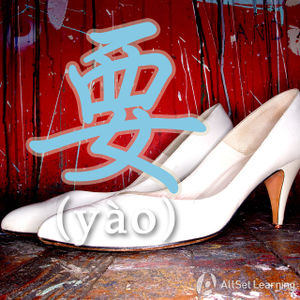Difference between revisions of "Expressing "either... or..." with "yaome""
| Line 16: | Line 16: | ||
<div class="liju"> | <div class="liju"> | ||
| − | * 你 <strong>要么</strong> <em>今天</em> 过来 ,<strong>要么</strong> <em>后天</em> 过来 。 | + | * 你 <strong>要么</strong> <em>今天</em> 过来 ,<strong>要么</strong> <em>后天</em> 过来 。<span class="trans">You can either come back today or the day after tomorrow.</span> |
| − | * 咱们 <em>要么</em> 说 汉语,<em>要么</em> 就 别 说话。 | + | * 咱们 <em>要么</em> 说 汉语,<em>要么</em> 就 别 说话。<span class="trans">We'll either speak Chinese or another language.</span> |
</div> | </div> | ||
| Line 25: | Line 25: | ||
<div class="liju"> | <div class="liju"> | ||
| − | * 我们 <strong>要么</strong> 喝 <em>葡萄酒</em>,<strong>要么</strong> 喝 <em>啤酒</em>。 | + | * 我们 <strong>要么</strong> 喝 <em>葡萄酒</em>,<strong>要么</strong> 喝 <em>啤酒</em>。<span class="trans">We either drink wine or we drink beer.</span> |
</div> | </div> | ||
| Line 33: | Line 33: | ||
<div class="liju"> | <div class="liju"> | ||
| − | * <strong>要么</strong> <em>你</em> 去,<strong>要么</strong> <em>我</em> 去。 | + | * <strong>要么</strong> <em>你</em> 去,<strong>要么</strong> <em>我</em> 去。<span class= |
| + | trans">Either you go or I go.</span> | ||
</div> | </div> | ||
Revision as of 07:17, 13 June 2013
-
Level
-
Similar to
-
Used for
-
Keywords
You can give a series of alternatives by using 要么. The structure is pretty versatile, as you can put a wide variety of things after each 要么:
Structure
要么 + [option A] + 要么 + [option B]
Examples
Firstly, you can use an adverbial (extra information about the verb such as time, manner or place). Some examples:
- 你 要么 今天 过来 ,要么 后天 过来 。You can either come back today or the day after tomorrow.
- 咱们 要么 说 汉语,要么 就 别 说话。We'll either speak Chinese or another language.
Secondly, different objects can be given as options:
- 我们 要么 喝 葡萄酒,要么 喝 啤酒。We either drink wine or we drink beer.
Different subjects also work:
- 要么 你 去,要么 我 去。Either you go or I go.
See also
Sources and further reading
Books
- Integrated Chinese: Level 2, Part 1 (pp. 158) →buy
- New Practical Chinese Reader 4 (新实用汉语课本4) (pp. 165) →buy



